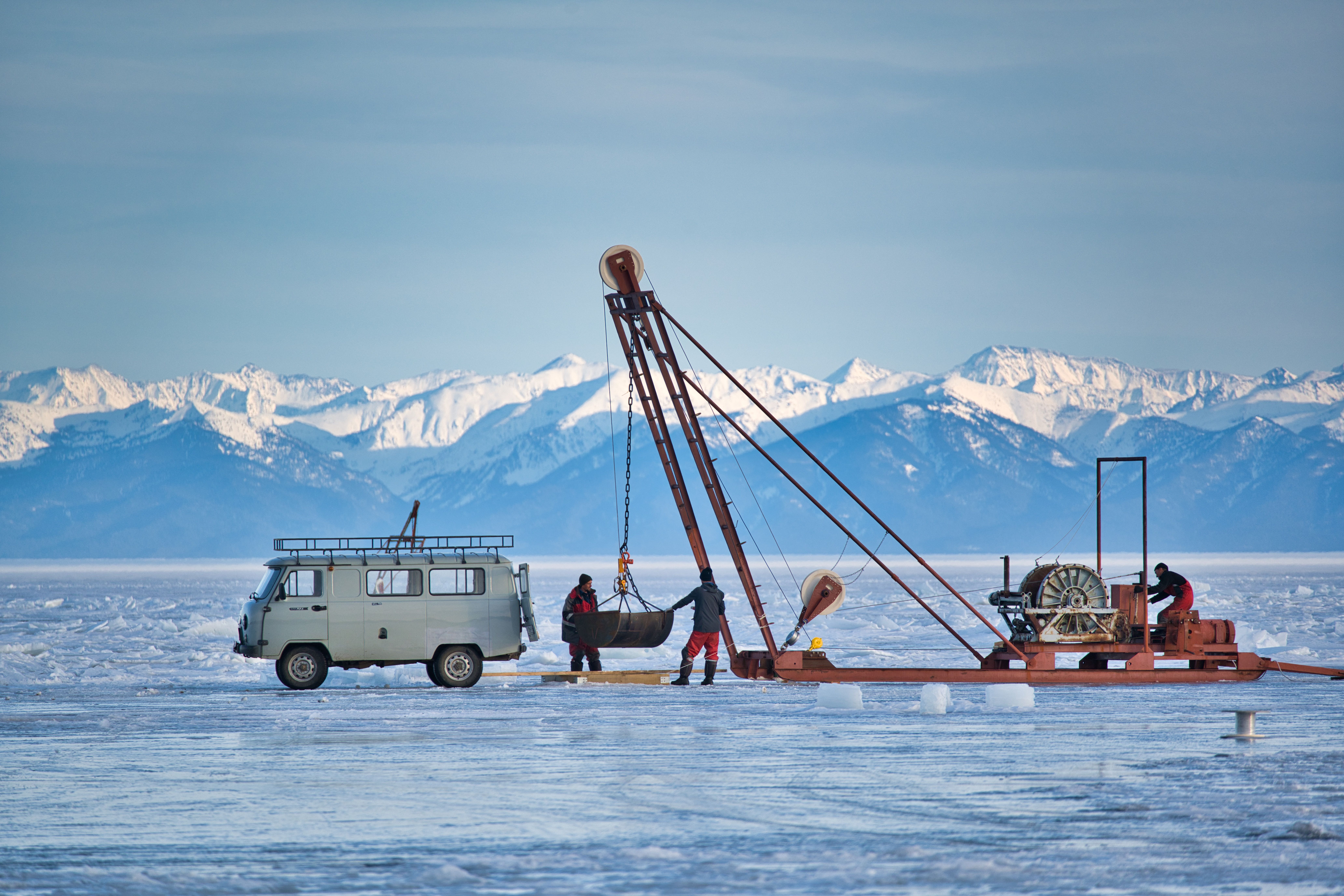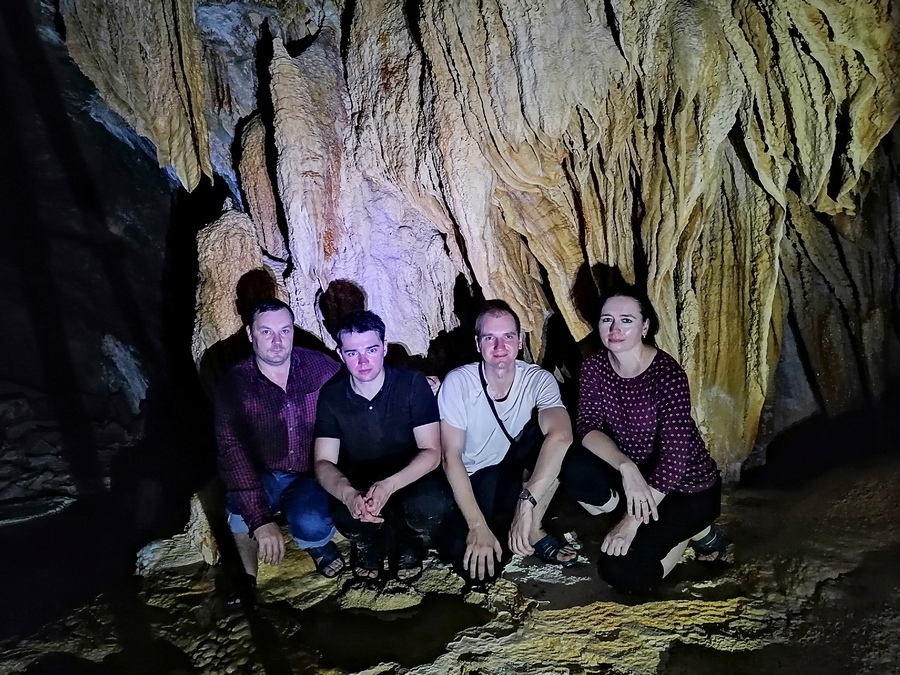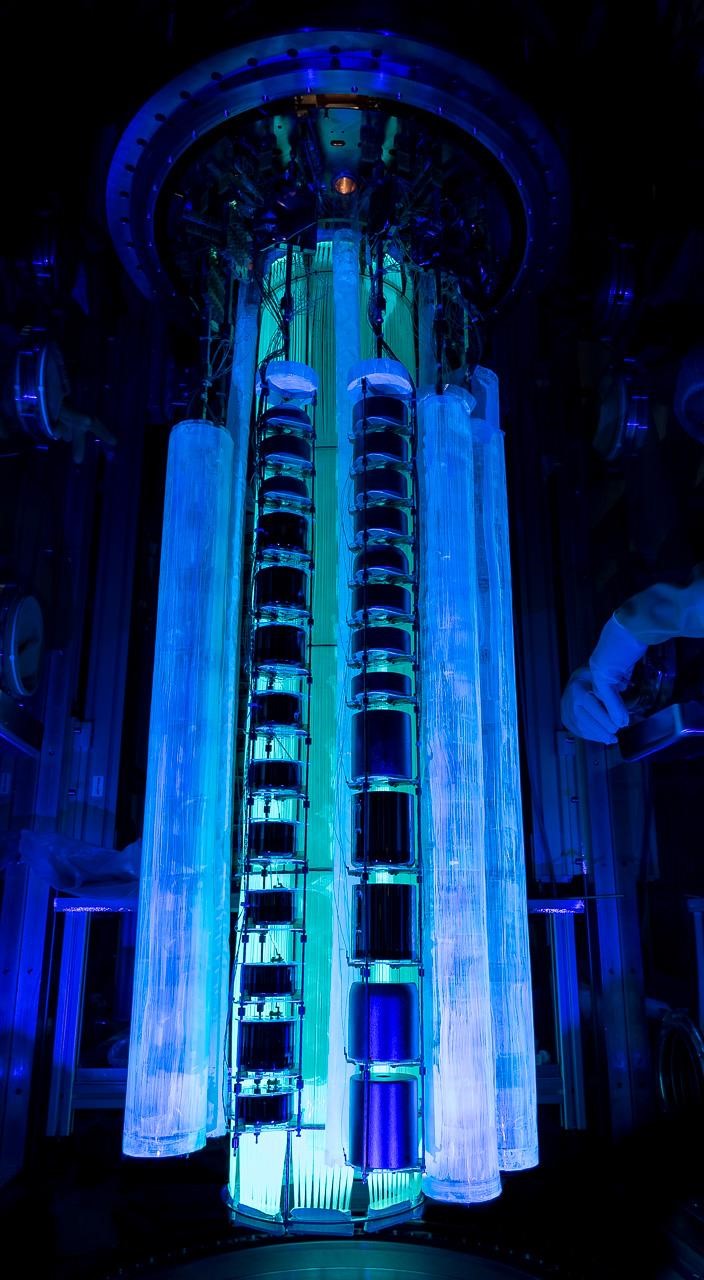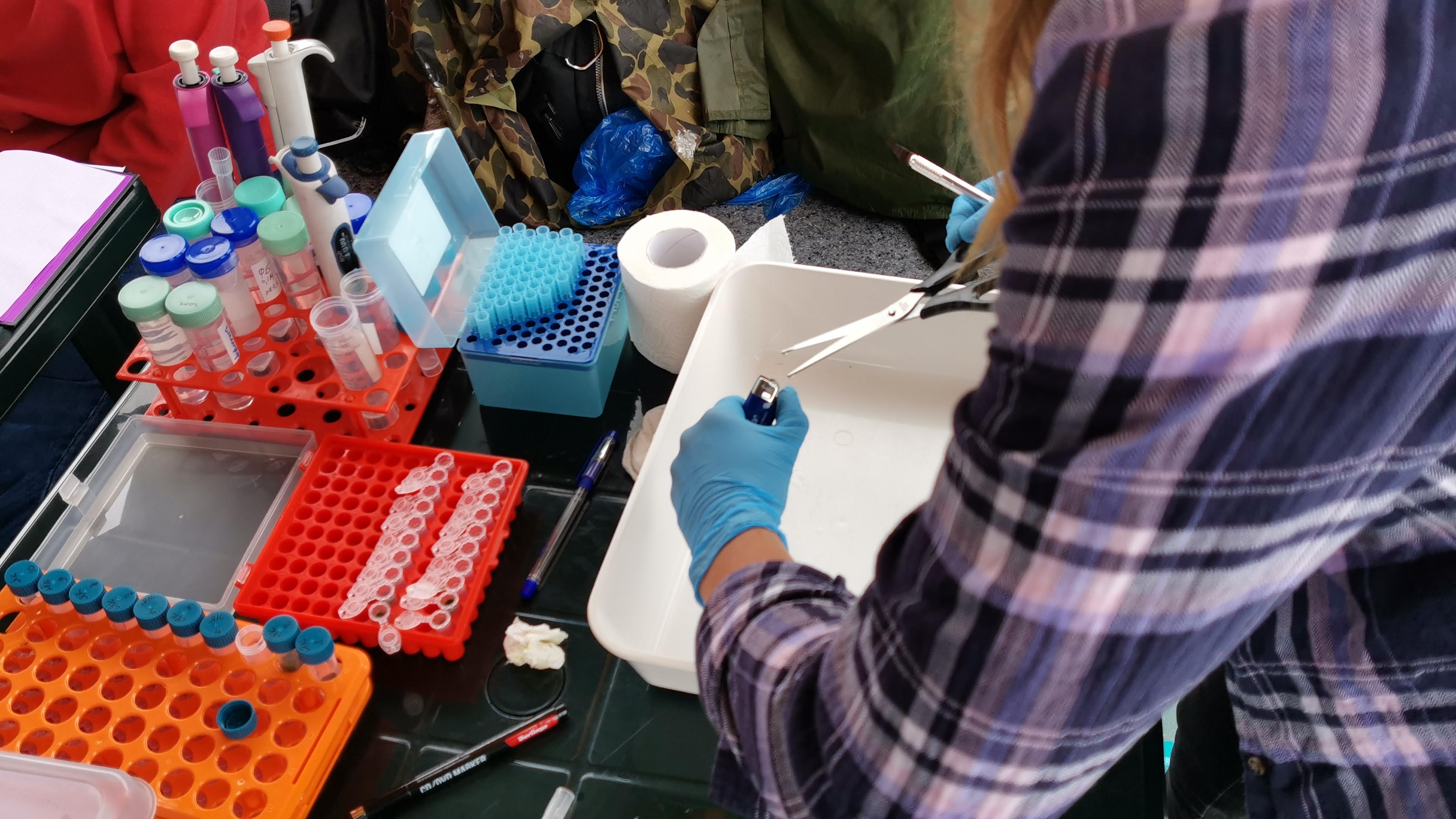DUNE: Striving for Revolutionary Discoveries
The preparation stage of DUNE, the international Deep Underground Neutrino Experiment, on the basis of the accelerator complex of the Fermi National Accelerator Laboratory (Fermilab, USA) has started long ago. An important milestone of the whole project was the ceremony marking the start of construction of the Far Detector infrastructure on 21 July 2017. At present, the DUNE project involves more than 1000 scientists from different countries of the world. And scientists from the Joint Institute for Nuclear Research (JINR) are among the members of this large international collaboration. The DUNE experiment is expected to be launched after 2025.
Nikolay Anfimov, PhD in Physics and Mathematics, Head of the Sector of Experimental Methodology of the DLNP Experimental Department of Particle Physics (EDPP), one of the leaders of the JINR group involved in the project, talks about the significance of DUNE for the world’s science, about experimental objectives and stages, and the role of our group in this project.

 Neutrino beam path in the DUNE underground neutrino experiment. The proton beam at the accelerator complex Fermilab will be smashed into the target. Neutrinos produced in interactions will pass first through the Near Detector at Fermilab and then will reach the Far Detector located at Stanford Lab, 1300 km away. Image: Fermilab, https://www.fnal.gov/
Neutrino beam path in the DUNE underground neutrino experiment. The proton beam at the accelerator complex Fermilab will be smashed into the target. Neutrinos produced in interactions will pass first through the Near Detector at Fermilab and then will reach the Far Detector located at Stanford Lab, 1300 km away. Image: Fermilab, https://www.fnal.gov/
Why is neutrino physics so important today?
The neutrino is an amazing particle and can become the clue to many mysteries of nature. For instance, reveal why there is almost no antimatter in the Universe. Assist in investigating neutron stars and black holes in deep space. Prove whether the properties of neutrinos and antineutrinos are the same. Help to study the mass ordering of the three states of neutrinos. These are scientific objectives that researchers from the DUNE Collaboration set to attain.
DUNE is an accelerator neutrino experiment. Artificial neutrino sources provide scientists with many more opportunities for research, this is why reactor and accelerator neutrino experiments are most efficient in studying oscillations (transformations) of elusive particles.
And now, when neutrino oscillations have been already discovered, scientists go on with their studying. Why? “Now we use them as a good tool for examining parameters of neutrinos themselves, e. g., to determine neutrino mass ordering,” answers Nikolay Anfimov.
Neutrino oscillation research is one of the top-priority scientific directions at the Dzhelepov Laboratory of Nuclear Problems. Projects dealing with this research area are combined in Theme 1099 “Neutrino oscillation research” of the JINR Topical Plan. The DUNE experiment is presented in it along with the NOvA experiment and is actually the follow-up of the latter. “NOvA is a rather successful experiment in which the JINR group has been involved for a long time with a good scientific contribution,” remarks Nikolay Anfimov. “It is being conducted at Fermilab, one of the best accelerator laboratories in the world. Cooperation with Fermilab is of great value and interest to us.”
How is the DUNE experiment arranged?
It is very similar to the finishing NOvA project in its arrangement. What are their similarities and differences? These are long-baseline neutrino experiments whose major parts are a particle source (accelerator) and two detectors, the Near and the Far ones.
The NOvA particle source is the Fermilab accelerator complex. It will be utilized in the DUNE experiment, a flagship Fermilab project, after completion of the ambitious upgrade PIP-II (Proton Improvement Plan II). The accelerator will smash the particle beam into the target, and the resulting secondary particles will decay into neutrinos which in their turn will set off for the Near Detector. It will be located half a kilometre away from the accelerator, deep underground, which is necessary to shield the detector against cosmic rays. The Near Detector is aimed at the determination of neutrino fluxes which leave the target.
Afterwards, the neutrino beam will travel to the Far Detector directly through the Earth, without a tunnel. Unlike other particles, neutrinos will run almost without interacting with the Earth’s matter. Part of them will oscillate, that means, turn into neutrinos of other types, e. g., muon neutrinos into electron ones. The Far Detector will record the changes in the beam composition, which will be seen during data processing.
 Neutrinos hardly interact with matter, and the particle beam easily travels long distances through the Earth’s interior. Image: Fermilab, https://www.fnal.gov/
Neutrinos hardly interact with matter, and the particle beam easily travels long distances through the Earth’s interior. Image: Fermilab, https://www.fnal.gov/
Compared to NOvA, the updated accelerator will produce a more powerful particle beam, and the distance between the Near and Far Detectors will extend from 800 to 1300 km. The detectors will be developed and constructed in new locations from scratch. The NOvA Far Detector is in Minnesota, near the border with Canada, and the DUNE Far Detector will be in South Dakota, in the city of Lead.
 Near Detector of the DUNE experiment. Left to right: SAND detector, multipurpose detector MPD, modular liquid-argon TPC (ND-LAr TPC)
Near Detector of the DUNE experiment. Left to right: SAND detector, multipurpose detector MPD, modular liquid-argon TPC (ND-LAr TPC)
This detector location and increased beam intensity allow obtaining new data, and also improving the statistical significance of the experimental results. For instance, the significance of determination of neutrino mass ordering will be at the level of five and more standard deviations for all values of the phase violating space-charge parity (compare with the precision of the JUNO experiment also aimed at studying neutrino mass ordering, which is not more than 4.2 standard deviations).
“The DUNE detector will be more precise compared to the NOvA detector,” says Nikolay Anfimov. “And what is more, the selected working medium, liquid argon, will be denser than mineral oil with wavelength shifters which is used in the NOvA detector. But we have to work at cryogenic temperatures and need sophisticated cryogenic equipment.”
A modular time-projection chamber filled with liquid argon (ND-Lar TPC) is intended to be used at the Near Detector.
TPCs have been successfully used in particle physics experiments already for a long time. For instance, this detector will be a core of the MPD facility at the NICA collider (JINR). A TPC is a hybrid of drift and proportional chambers and allows three-dimensional imaging of particle tracks moving through the detector. We have to work in liquid argon without amplification, that is why the requirements on the charge readout electronics (developed in the USA) are rather strict.
 Configuration of the ND-LAr and light readout system
Configuration of the ND-LAr and light readout system
To decipher information from this chamber, one should know the initial interaction time which in the case of neutrinos is, alas, impossible. What solution was found for the TPC of the DUNE experiment? Nikolay Anfimov answers, “Not only a charge but also scintillation light is produced in liquid argon during interactions. And this light flash can be used to fix the interaction time. In which way? This light has a very short wave length, about 127-128 nanometres. It cannot go through the air because of being absorbed by oxygen. For this reason, it is difficult to develop a system to detect this flash – we need auxiliary methods, e. g., applying substances that can absorb this light and then re-emit it with a different wave length.
But there are more challenges. To detect the light fluxes like this one, vacuum or silicon photomultipliers are usually used. In this experiment, light has to be detected along a strong electric field whose voltage can reach a kilovolt per centimetre. For this reason, light detection systems should be made of dielectric materials exactly in the part of the chamber where this light is propagating. And JINR undertook to develop such a system.”
Joint Institute for Nuclear Research in the DUNE Collaboration
“We have long-lasting friendly relations with the University of Bern,” continues Nikolay Anfimov, “since the time of development and operation of another accelerator neutrino experiment, OPERA. The neutrino beam from CERN was detected at a distance of 730 km away, at the Gran Sasso Laboratory, Italy. Our colleagues from Bern knew that we are skilled in detector developing. And when the necessity to develop a detector light readout system arose, they contacted JINR. A system like this one requires a huge creative and financial resource, this is the project at the scale of a national laboratory or large research institute. The University of Bern had its own ideas about the configuration of such a system. But we decided to develop our readout system on the basis of fibre optics using the GERDA experience which was very helpful.
We adopted the experience of our colleagues from the DLNP Experimental Department of Nuclear Spectroscopy and Radiochemistry (EDNSR) who are involved in the GERDA experiment. A similar method of light detection in liquid argon with tetra-phenylbutadiene (TPB) as a wavelength shifter was employed there. TBP coating is applied to green wavelength shifting fibres. Vacuum ultraviolet radiation transforms into a blue light which can be caught by green wavelength fibres and transported further to the area beyond the strong electric field where a standard silicon photomultiplier (SiPM) can be installed.
There is no electric field in GERDA, but we used the idea of our colleagues having adapted it to our objectives and conditions.”


Light collection modules for the ND-LAr TPC. Left: manufacturing stage, right: design model
At present, a pilot batch of these light collection modules is ready. The prototype time-projection chamber with all necessary components is assembled at the University of Bern. In March−April 2021, Nikolay Anfimov and Alexander Selyunin, a junior researcher of the Sector of Experimental Methodology of EDPP, were on their working trip to Bern to test the chamber. The newly assembled facility operated really well. “This is a success,” shares his impression Nikolay Anfimov. “Especially, when the project had to be discussed online due to COVID restrictions.”
 Testing the prototype TPC Module0 at the University of Bern (Switzerland). In the photo: Alexander Selyunin and Nikolay Anfimov
Testing the prototype TPC Module0 at the University of Bern (Switzerland). In the photo: Alexander Selyunin and Nikolay Anfimov
Participating in the DUNE experiment is a valuable experience
Participating in the DUNE experiment is an exceptional experience for DLNP staff members. Science collaboration teams often work on a particular facility subsystem or on a separate component of the detection system, which means, they work stand-alone. “In this case, we are developing the project together with our American colleagues, and the integration level is really high,” says Nikolay Anfimov. “We have to thoroughly coordinate our mutual work to get all elements fit each other and units start their operation properly. Light collection modules are not the only thing we make. These are also the full chain of readout electronics, a power supply system, a Data Acquisition system and software to control all these systems, including the ADC. I would like to note that the ADC we use is designed by our colleagues from BVLHEP (JINR).”
The success arose from the highest level of work management. “Such a preparation level I see for the first time in my career. Risks and different possible outcomes are evaluated. The drawings are thoroughly prepared, the integration and installation procedures are prescribed. There is also an evaluation of funding with all risks considered. There is a special manager group in the team which controls all the processes and makes sure that the project members regularly refresh the requirement and risk register. An extra bonus – new team members easier get involved in the project with elaborated comprehensive documentation at hand. Such thoroughness requires much time. There are three or four online meetings with our American colleagues every week.”
Present and future cooperation of the DUNE Collaboration and JINR
Now, prototype detector tests are being performed at the University of Bern. “The detector is operating spectacularly. Particle tracks are clearly seen, and everything can be perfectly joined. Even cosmic rays display super curious physics.”
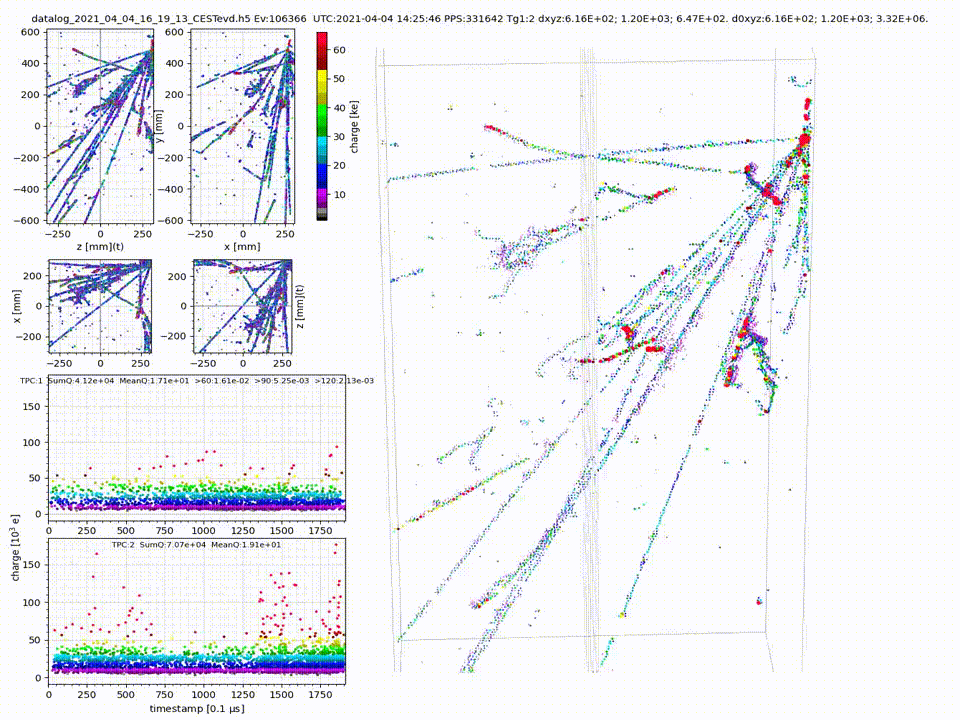 Example of reconstructed cosmic ray tracks in the Module0: “Particle shower”
Example of reconstructed cosmic ray tracks in the Module0: “Particle shower”
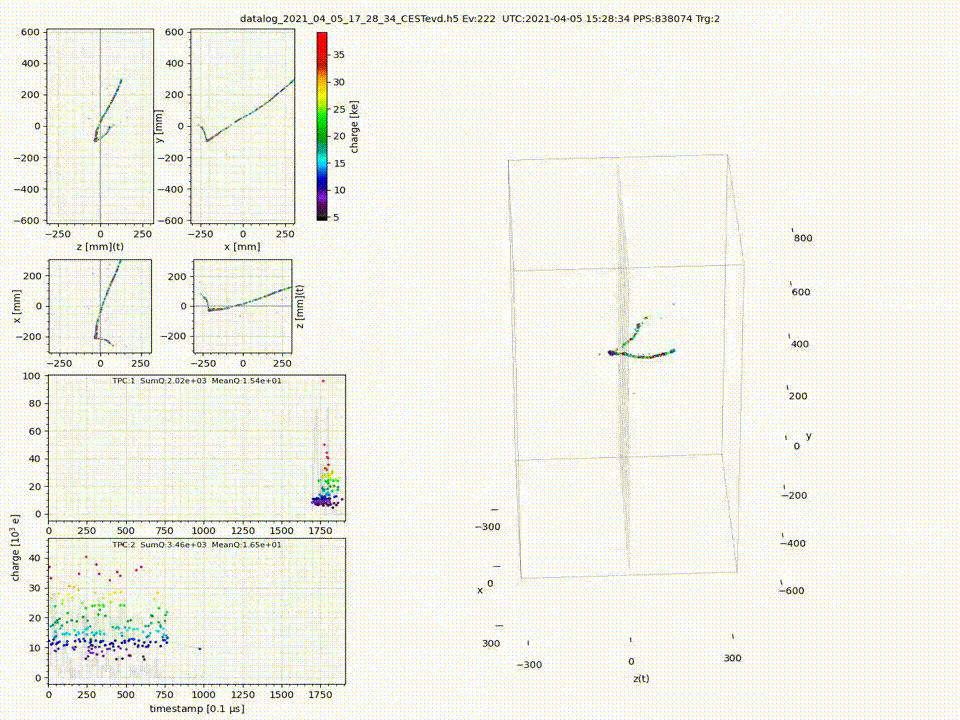 Example of reconstructed cosmic ray tracks in the Module0: “Michel electron” (Michel electron is an electron resulting from decay of the stopped muon)
Example of reconstructed cosmic ray tracks in the Module0: “Michel electron” (Michel electron is an electron resulting from decay of the stopped muon)
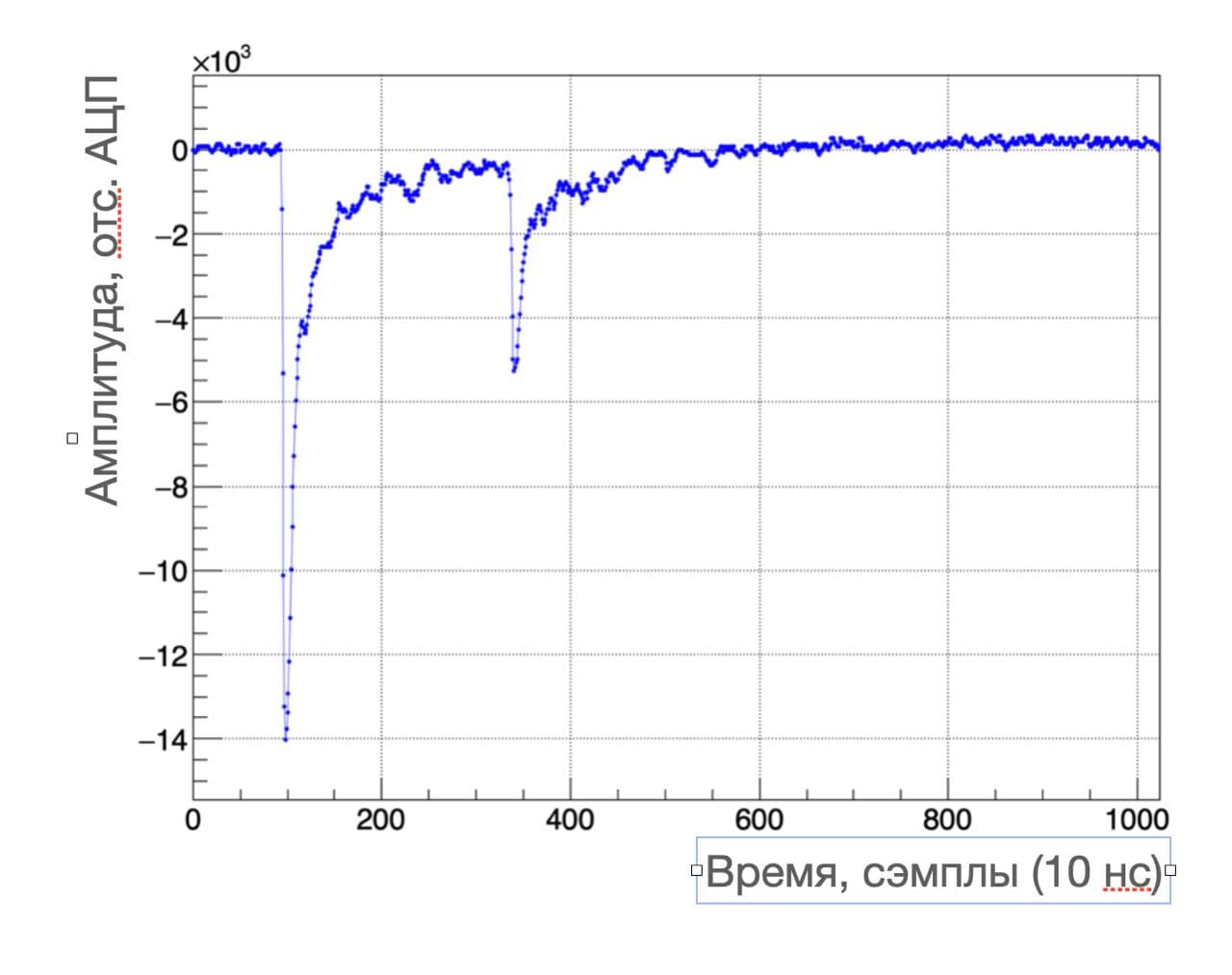 Muon decay as seen by the light readout system. The first signal is from a muon, the second one from an electron. Decay time is about 2.5 μs (Editor's note: Mean lifetime of a muon is 2.2 μs.)
Muon decay as seen by the light readout system. The first signal is from a muon, the second one from an electron. Decay time is about 2.5 μs (Editor's note: Mean lifetime of a muon is 2.2 μs.)The next stage is to manufacture four modules, test them in Bern, transport to Fermilab and assemble them into the 2 x 2 array. It will already be a serious and powerful prototype of the future detector with about 400 detection elements. Tests at Fermilab are scheduled for the next year, and the work is in full swing.
The multichannel power source for SiPMs was developed by DLNP researchers together with the “Marafon” company (Moscow). The source proved to be excellent. It will be also used for SiPMs in the TAO detector of the JUNO experiment.
The project software is being developed by the DLNP team alone. “It has to “communicate” with our electronics.”
A cryogenic test bench was installed at DLNP in 2019 to test detector elements, which allows performing part of tests onsite.
The core of the DUNE team at DLNP comprises twelve people who are directly involved in the detector development. “There are also development engineers, testers, equipment assemblers. And those who deal with computing (Oleg Samoylov (DLNP) and Nikita Balashov (MLIT)), and those who make detector simulations (for the Near Detector − Artyom Chukanov (DLNP)) and others. The Head of the project is Alexander Grigorevich Olshevskiy. And everyone is working hard to keep the schedule.”
Nikolay Anfimov coordinates the activities of a large team.



Anode pixel plane of the charge readout system (developed in the USA). Left: general view. Right top: zoomed-in view. Right bottom: back side with ASIC chips
 Alexey Chetverikov, a researcher of the Sector of Experimental Methodology of EDPP (Photo by Irina Sidorova, DLNP SciCom Group)
Alexey Chetverikov, a researcher of the Sector of Experimental Methodology of EDPP (Photo by Irina Sidorova, DLNP SciCom Group)
 Vladislav Sharov, a researcher of the Sector of Experimental Methodology of EDPP (Photo by Irina Sidorova, DLNP SciCom Group)
Vladislav Sharov, a researcher of the Sector of Experimental Methodology of EDPP (Photo by Irina Sidorova, DLNP SciCom Group)  Nikolay Anfimov, Head of the Sector of Experimental Methodology of EDPP of DLNP (Photo by Irina Sidorova, DLNP SciCom Group)
Nikolay Anfimov, Head of the Sector of Experimental Methodology of EDPP of DLNP (Photo by Irina Sidorova, DLNP SciCom Group)
“After prototype testing, detector mass production will start,” Nikolay Anfimov shares his plans. “We count on cooperation with domestic companies to which we can pass our models for mass production. A batch of a few thousand detectors and eight thousand channels for electronics is to be manufactured.”
There are a lot of requirements for upcoming manufacture, including those for the staff qualification level. The current detector version must be scaled up since the prototype is developed in a scaled-down version. Mass production is to be launched the next year.
“Enormous efforts we made resulted in that we successfully passed the Internal Review. Now we are preparing for the Preliminary Design Review which will be held at the collaboration level at the end of 2021. Next year, the Final Design Review is to be passed before the mass production launch.
We joined the project in 2017, at the prototype development stage. Afterwards, it became obvious that we are ready to make a well-engineered large-scale detector. It requires a huge number of resources, even at the prototype development stage. Last year, in May, we officially joined the DUNE Collaboration. The project was successfully presented at the session of the JINR Programme Advisory Committee and included in Theme 1099 of the JINR Topical Plan till 2023 as a prototype development project. I hope that by 2023 we will have designed the entire system, and our project will be prolonged within the JINR Topical Plan in this status.
We thank Nikolay Anfimov for this detailed account and wish him and his team a lot of success in their activities!
Смотрите также:
Николай Анфимов "Жидко-аргоновая TPC ближнего детектора эксперимента DUNE"
{nomultithumb}



